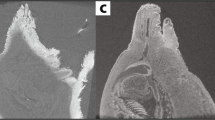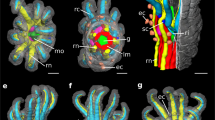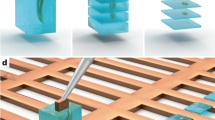Abstract
DURING a recent study of the platyctenid ctenophores of Jamaica, the following technique was devised to allow even the most delicate and minute platyctenid to be immobilized, fixed, stained and embedded in any desired position with the minimum distortion. As this method has since been used successfully with rhabdocœl turbellaria, it is felt that its usefulness might well be extended to a wider range of invertebrates.
This is a preview of subscription content, access via your institution
Access options
Subscribe to this journal
Receive 51 print issues and online access
$199.00 per year
only $3.90 per issue
Buy this article
- Purchase on Springer Link
- Instant access to full article PDF
Prices may be subject to local taxes which are calculated during checkout
Similar content being viewed by others
References
Komai, T., Mem. Coll. Sci., Kyoto, B, 17 (1), 1 (1942).
Steedman, H. F., Quart. J. Micro. Sci., 88 (1), 123 (1947).
Author information
Authors and Affiliations
Rights and permissions
About this article
Cite this article
RANKIN, J. A New Technique for Microscopic Preparations of Small Marine Animals. Nature 171, 35–36 (1953). https://doi.org/10.1038/171035a0
Issue Date:
DOI: https://doi.org/10.1038/171035a0
Comments
By submitting a comment you agree to abide by our Terms and Community Guidelines. If you find something abusive or that does not comply with our terms or guidelines please flag it as inappropriate.



